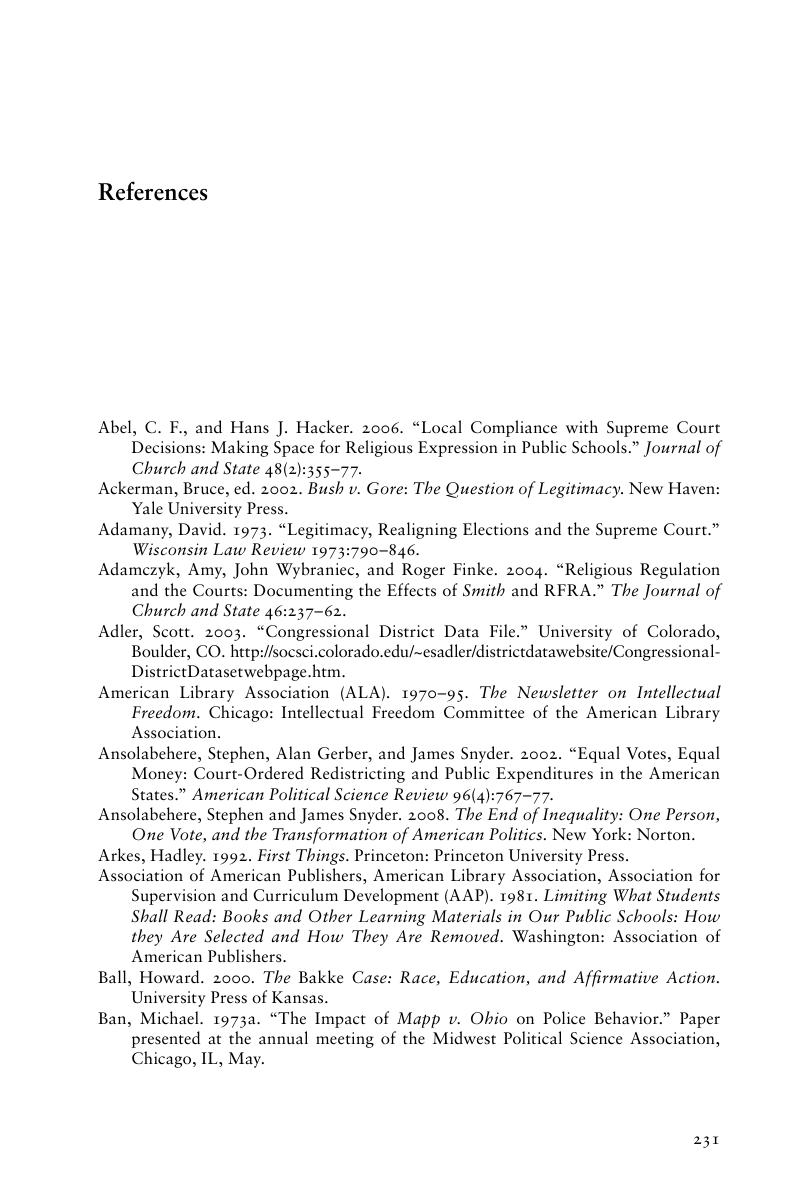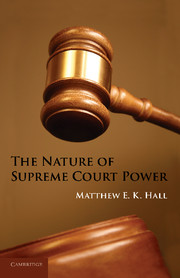Book contents
- Frontmatter
- Contents
- List of Figures
- List of Tables
- Preface
- 1 Neither Force, Nor Will
- 2 When Courts Command
- 3 Judging the Court
- 4 Popular Vertical Issues
- 5 Unpopular Vertical Issues
- 6 Popular Lateral Issues
- 7 Unpopular Lateral Issues
- 8 Neither the Sword nor the Purse, but the Keys
- Appendix I Case Selection
- Appendix II Survey Information and Citations
- Appendix III Supporting Data for Figures
- Appendix IV Statistical Analysis on the Effects of the Pico Ruling
- Appendix V Behavior Conformity Calculations
- Appendix VI Statistical Analysis of Behavior Conformity
- Appendix VII The Effects of Unanimity on Behavior Conformity
- Case References
- References
- Index
- References
References
Published online by Cambridge University Press: 06 December 2010
- Frontmatter
- Contents
- List of Figures
- List of Tables
- Preface
- 1 Neither Force, Nor Will
- 2 When Courts Command
- 3 Judging the Court
- 4 Popular Vertical Issues
- 5 Unpopular Vertical Issues
- 6 Popular Lateral Issues
- 7 Unpopular Lateral Issues
- 8 Neither the Sword nor the Purse, but the Keys
- Appendix I Case Selection
- Appendix II Survey Information and Citations
- Appendix III Supporting Data for Figures
- Appendix IV Statistical Analysis on the Effects of the Pico Ruling
- Appendix V Behavior Conformity Calculations
- Appendix VI Statistical Analysis of Behavior Conformity
- Appendix VII The Effects of Unanimity on Behavior Conformity
- Case References
- References
- Index
- References
Summary

- Type
- Chapter
- Information
- The Nature of Supreme Court Power , pp. 231 - 244Publisher: Cambridge University PressPrint publication year: 2010



